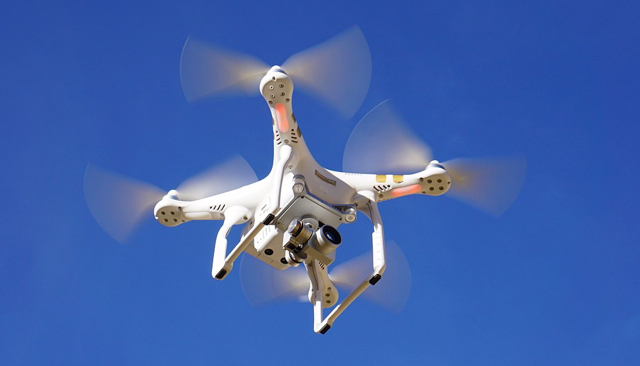Sales of DJI Drones Are Going Sky-High as Market Takes Off
April 18, 2017
Drones are a booming industry sector. Gartner Research says global drones sales in 2016 bumped up 60 percent to 2.2 million, with revenue growing 36 percent to $4.5 billion. The Consumer Technology Association reports that hobbyists in the U.S. purchased 2.4 million drones in 2016, compared to 1.1 million in 2015. But it isn’t easy to nail down sales numbers for drones, given that the definition for what constitutes a drone varies. Gartner calls an aircraft that can connect to the Internet a drone, a “conservative” definition.
Recode notes that the CTA, however, includes even flying devices under 250 grams that “don’t necessarily process data or even have to be registered with the Federal Aviation Administration.” The CTA estimate of drones sold in the U.S. in 2016 goes down to 825,000 when the tiny aircraft aren’t included. Another estimate comes from NPD Group, which “estimated that U.S. sales of drones more than doubled in the 12-month period ending this February, increasing 117 percent year over year.”
By far, the market leader is DJI, whose Phantom and Mavic Pro drones, both of which are often used for aerial photography, cost between $500 and $1,000. Skylogic Research founder Colin Snow says DJI drones account for 36 percent of the market. In comparison, the No. 2 spot, held by 3D Robotics, represents 19 percent of the market in that price range, and the company stopped making drones in 2016. Other players in the drone market include France’s Parrot and China’s Yuneec, each of which account for 7 percent of the drones in the same price range.
According to Snow, DJI even owns the pricier end of the market, with 66 percent of those in the $1,000 to $2,000 range, and 67 percent of the $2,000-$4,000 range. He adds that one of the reasons that DJI dominates the top tier drone space is that 1,500 people are working on research and development.
Another factor that boosted DJI’s fortunes, says Frost & Sullivan senior analyst Mike Blades, is its partnerships, such as the one with Sony for camera components; Apple also now sells DJI drones in its stores. Manufacturing in Shenzen in its own facilities allows for rapid iteration and testing.
DJI also competes by aggressively cutting prices; 3D Robotics chief executive Chris Anderson says DJI cut prices “as much as 70 percent in less than a year,” the “primary reason” why his company stopped making drones.
The only sector where DJI does not dominate is in drones below $500, which Recode dubs “toys.” But these companies are struggling. Lily, a startup to build an inexpensive camera drone, “recently imploded,” and GoPro “had to recall its Karma drone only weeks after it was launched,” although it’s now back on the market.
Gartner forecasts that drone sales will grow to almost 3 million units and more than $6 billion in revenue in 2017, representing “39 percent unit growth and 34 percent revenue growth over 2016.” This year, personal drones, mainly used for photography, are expected to grow about 40 percent to 2.8 million and commercial drones about 60 percent to 174,000.


No Comments Yet
You can be the first to comment!
Sorry, comments for this entry are closed at this time.